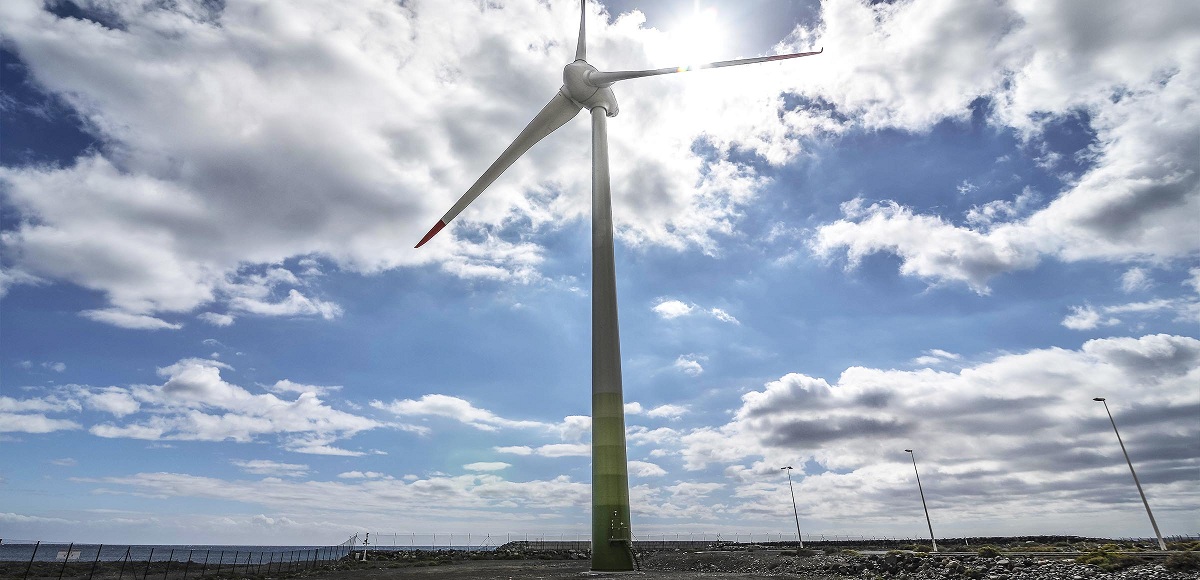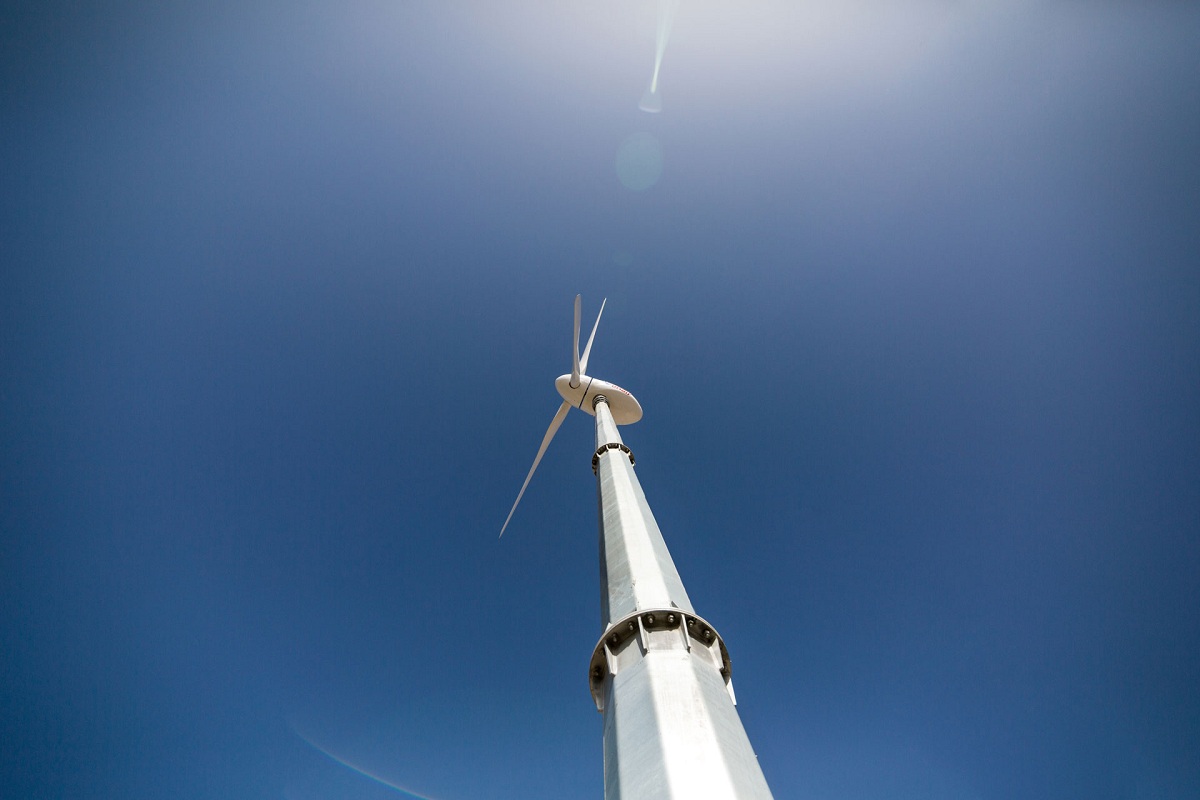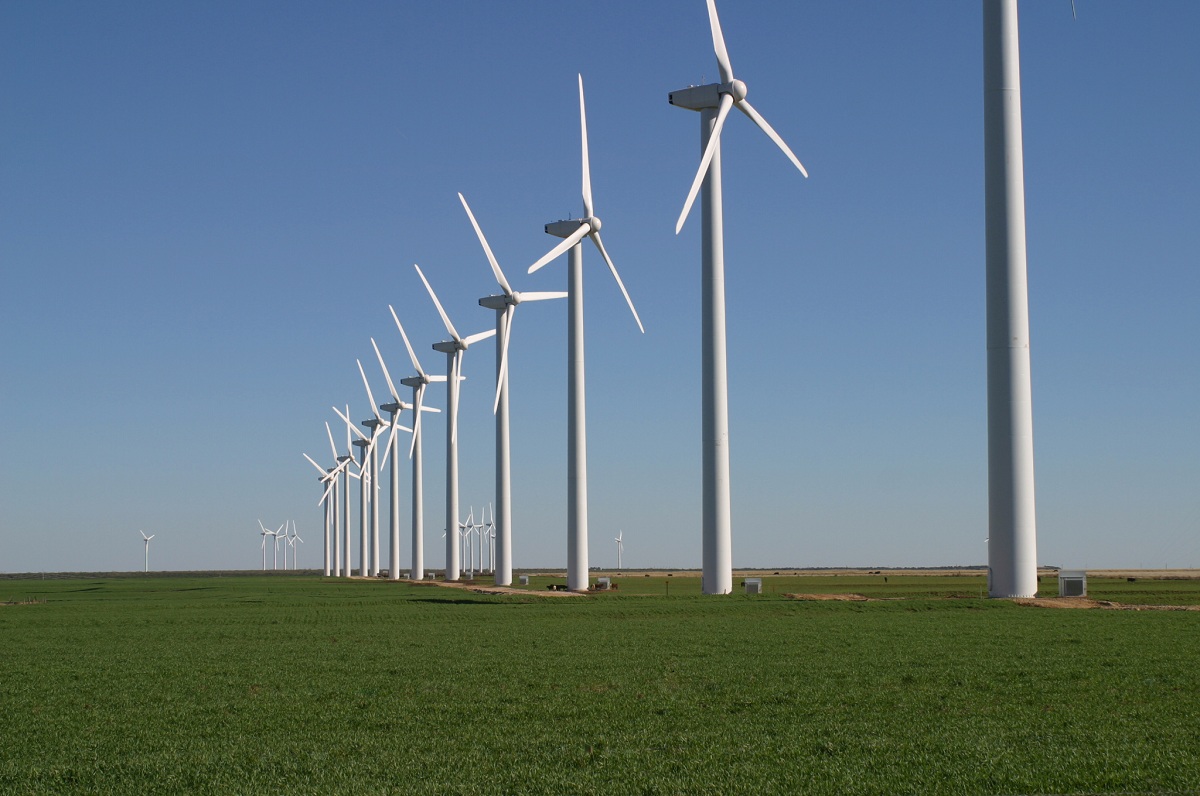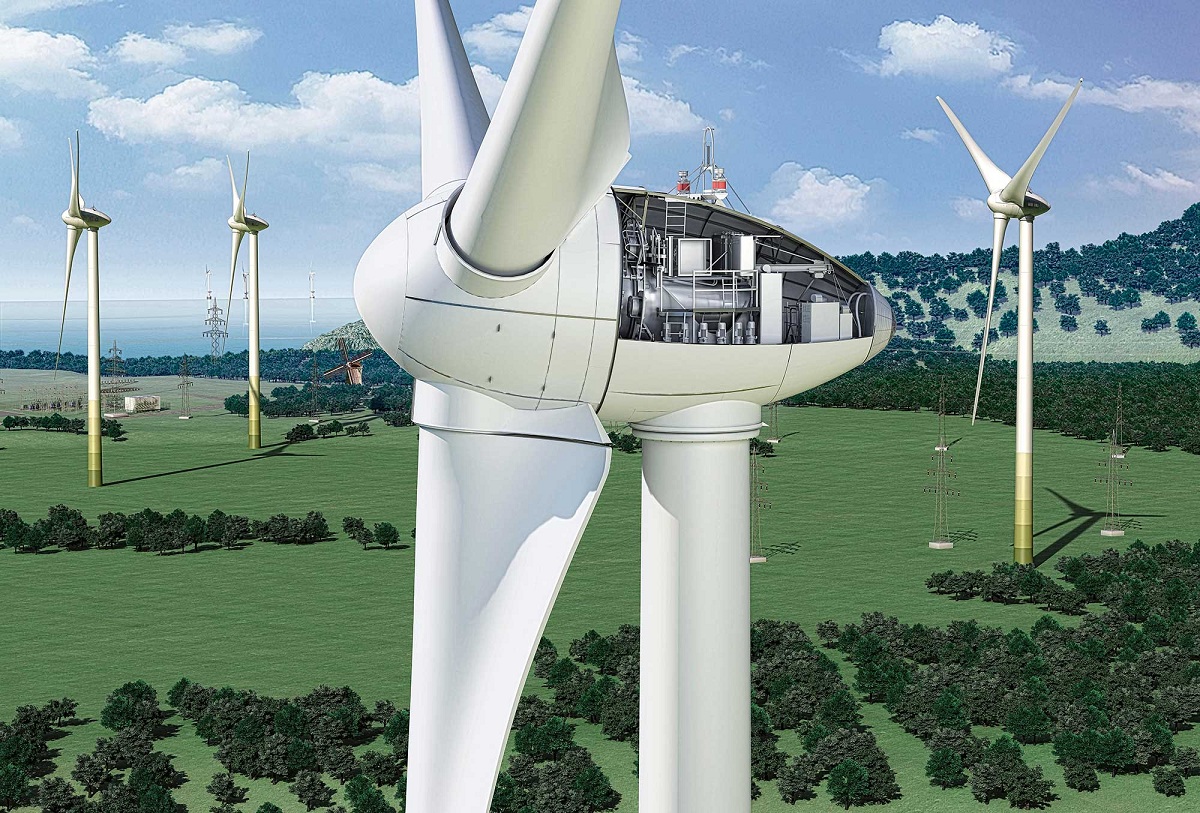
Wind energy is one of the most important in the world of renewable energy. Therefore, we must know well what its operation. The wind turbine It is one of the fundamental elements of this type of energy. It has a fairly complete operation and there are different types of turbines depending on the wind farm where we are.
In this article we are going to tell you everything you need to know about the wind turbine, its characteristics and how it works.
What is a wind turbine

A wind turbine is a mechanical device that converts wind energy into electrical energy. Wind turbines are designed to convert the kinetic energy of the wind into mechanical energy, which is the movement of the axis. Then, in the turbine generator, this mechanical energy is converted into electrical energy. The electricity generated can be stored in a battery or used directly.
There are three basic laws of physics that govern the available energy of the wind. The first law states that the energy produced by the turbine is proportional to the square of the wind speed. The second law states that the available energy is proportional to the swept area of the blade. The energy is proportional to the square of the length of the blade. The third law establishes that the maximum theoretical efficiency of a wind turbine is 59%.
Unlike the old windmills of Castilla La Mancha or the Netherlands, in these windmills the wind pushes the blades to rotate, and modern wind turbines use more complex aerodynamic principles to capture wind energy more efficiently. In fact, the reason why a wind turbine moves its blades is similar to the reason why an airplane stays in the air, and it is due to a physical phenomenon.
In wind turbines, two types of aerodynamic forces are generated in the rotor blades: one is called thrust, which is perpendicular to the direction of the wind flow, and the other is called drag, which is parallel to the direction of the flow of wind. air.
The design of the turbine blades is very similar to that of an airplane wing and behaves like the latter in windy conditions. On an airplane wing, one surface is very round, while the other is relatively flat. When air circulates through the mill blades of this design, the airflow through the smooth surface is slower than the airflow through the round surface. This speed difference in turn will produce a pressure difference, which is better on a smooth surface than on a round surface.
The end result is a force acting on the smooth surface of the thruster wing. This phenomenon is called the "Venturi effect", which is part of the reason for the "lift" phenomenon, which in turn, it explains why the aircraft remains in the air.
Interior of wind generators

The blades of a wind turbine also use these mechanisms to cause a rotational movement around their axis. The blade section design facilitates rotation in the most efficient way. Inside the generator, the process of converting the rotational energy of the blade into electrical energy takes place by Faraday's law. It must include a rotor that rotates under the influence of the wind, coupled to an alternator, and converts rotating mechanical energy into electrical energy.
Elements of a wind turbine

The functions implemented by each element are the following:
- Rotor: It collects wind energy and converts it into rotating mechanical energy. Even in very low wind speed conditions, its design is critical to turning. It can be seen from the previous point that the blade section design is the key to ensuring rotor rotation.
- Turbine coupling or support system: adapt the rotational movement of the blade to the rotational movement of the generator rotor to which it is coupled.
- Multiplier or gearbox: At normal wind speeds (between 20-100 km / h), the rotor speed is low, around 10-40 revolutions per minute (rpm); To generate electricity, the generator rotor must be operating at 1.500 rpm, so the nacelle must contain a system that converts the speed from the initial value to the final value. This is accomplished by a mechanism similar to the gearbox in a car engine, which uses a set of multiple gears to rotate the moving part of the generator at a speed suitable for generating electricity. It also contains a brake to stop the rotation of the rotor when the wind is very strong (more than 80-90 km / h), which can damage any component of the generator.
- Generator: It is a rotor-stator assembly that generates electrical energy, which is transmitted to the substation through cables installed in the tower that supports the nacelle, and then is fed into the grid. The power of the generator varies between 5 kW for the medium turbine and 5 MW for the largest turbine, although there are already 10 MW turbines.
- Orientation motor: Allows components to rotate to position the nacelle in the direction of the prevailing wind.
- Support mast: It is the structural support of the generator. The greater the power of the turbine, the greater the length of the blades and, therefore, the greater the height at which the nacelle must be located. This adds additional complexity to the tower design, which must support the weight of the generator set. The blade must also have high structural rigidity to withstand high winds without breaking.
- Paddles and anemometers: devices located at the rear of the gondolas that contain generators; they determine the direction and measure the wind speed, and act on the blades to brake them when the wind speed exceeds a threshold. Above this threshold, there is a structural risk of the turbine. This is usually a Savonious turbine type design.
I hope that with this information you can learn more about the wind turbine and its characteristics.